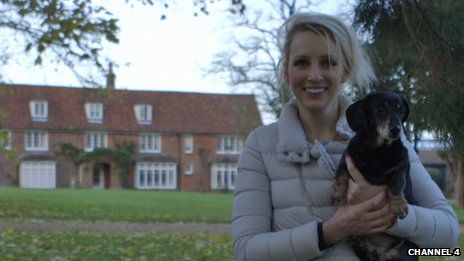It's called Mini Winnie and it's Britain's first cloned dog. Its owner, Rebecca Smith, 29, is, in fact, the winner of a £ 60 Sooam Biotech competition, which was giving away the cloning of her own pet.
He is about to end up run over, his mother saves him
It's called Mini Winnie and it's the Britain's first cloned dog. Its owner, Rebecca Smith, 29, is, in fact, the winner of a £ 60 Sooam Biotech competition, which was giving away the cloning of her own pet.
Thus, by his dachshund Winnie, aged 12, in Seoul, on March 30th, Mini Winnie was born, conceived in a test tube from the donor's DNA. Rebecca swears that her 10-day-old puppy is identical to her dachshund. The company has already created 400 cloned dogs and is now looking to expand their business around the world. Rebecca's experience will be told in a Channel 4 documentary entitled "The £ 60,000 Puppy: Cloning Man's Best Friend".
CLONING - Cloning was achieved through the Winnie Dachshund Fabric Pick whose DNA was then implanted in the egg that gave rise to an embryo which was transferred, in turn, to a surrogate mother: an "assembly line" with a high failure rate, where animals are treated like machines at the factory.

ABERRANT ETHICAL AND SCIETIFIC SPECULATION - Beyond the emotional aspects that could excite the deluded souls of being able to make your four-legged friend immortal, cloning techniques hide, in fact, a logic based on economic interests and speculation on the life of "laboratory" animals, financed by the vain hopes of those who have lost, or are losing, their four-legged companion and think they can manipulate life for our use and consumption. Lav, which defines Winnie's cloning, explains it.
Michela Kuan, head of LAV Vivisection sector, explains:
"The idea of being able to order the birth of dogs as objects is repugnant, both from an ethical and scientific point of view. The failure rate for cloning experiments remains very high, so also in this case the experiment involves exploitation and suffering of animals that are used as production basins for copy animals; moreover, the living being is the result of various components and the genetic one represents a maximum of 50%: it is unthinkable to obtain an identical copy of the individual who has been close to us for years because, as the word itself says, it is unique "
ABANDONED DOGS LOOKING FOR ADOPTION? - The use of cloning techniques is even more serious considering i many millions of dogs awaiting adoption in kennels and the many strays who live starving and deprived of the affection and security of a home; kennels all over the world are crowded and have no funds to protect the animals they host, but often the people who define themselves as animal lovers feed the interests of these laboratories ready to clone dogs, cats or other living beings.
ONE IN HUNDRED CE FA - Lav recalls that cloning experiments have ahigh failure rate. S.According to a study - based on INFIGEN data, one of the cloning multinationals, and on studies by Atsuo Ogura of the National Institute of Infectious Diseases in Tokyo - 75% of cloned animal embryos die within the first 2 months of pregnancy and in any case 25% are born dead or with deformities incompatible with life.
From 100 start-up cells, on average only one will become an "adult and healthy" animal. Malformed individuals are either euthanized at birth or euthanized after suffering from an unforeseen illness. This is why the news of these experiments is made public only a few weeks or months after the event, or when the animal survives at least the first phase of its existence as a "laboratory creature".



The problems most frequently encountered by cloned animals are: larger than normal body size, heart and lung disease, misshapen kidneys, intestinal blockages, immune deficiencies, diabetes, shorter than normal tendons, etc. "Animal cloning techniques are still very far from being perfectly tested: this means low efficiency of the procedures, which translated into other words means loss of animal lives, a fact that many scientists are careful not to declare publicly", concludes the Lav.
Roberta Ragni
Source and photos
ALSO READ:
Industrial-scale cloning: 500 pigs a year in China to test drugs


























